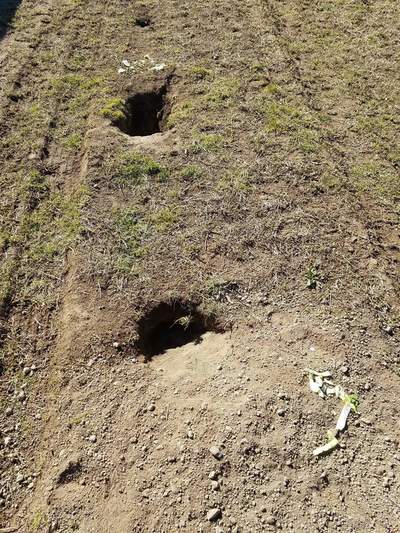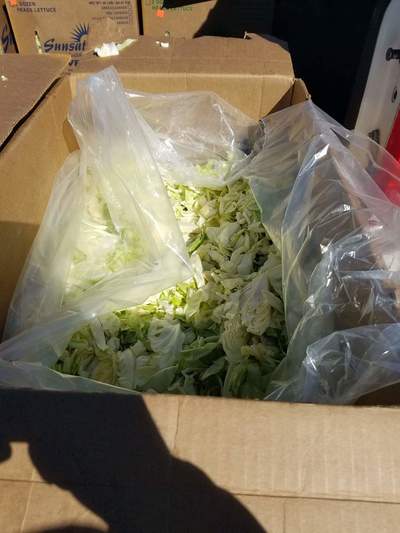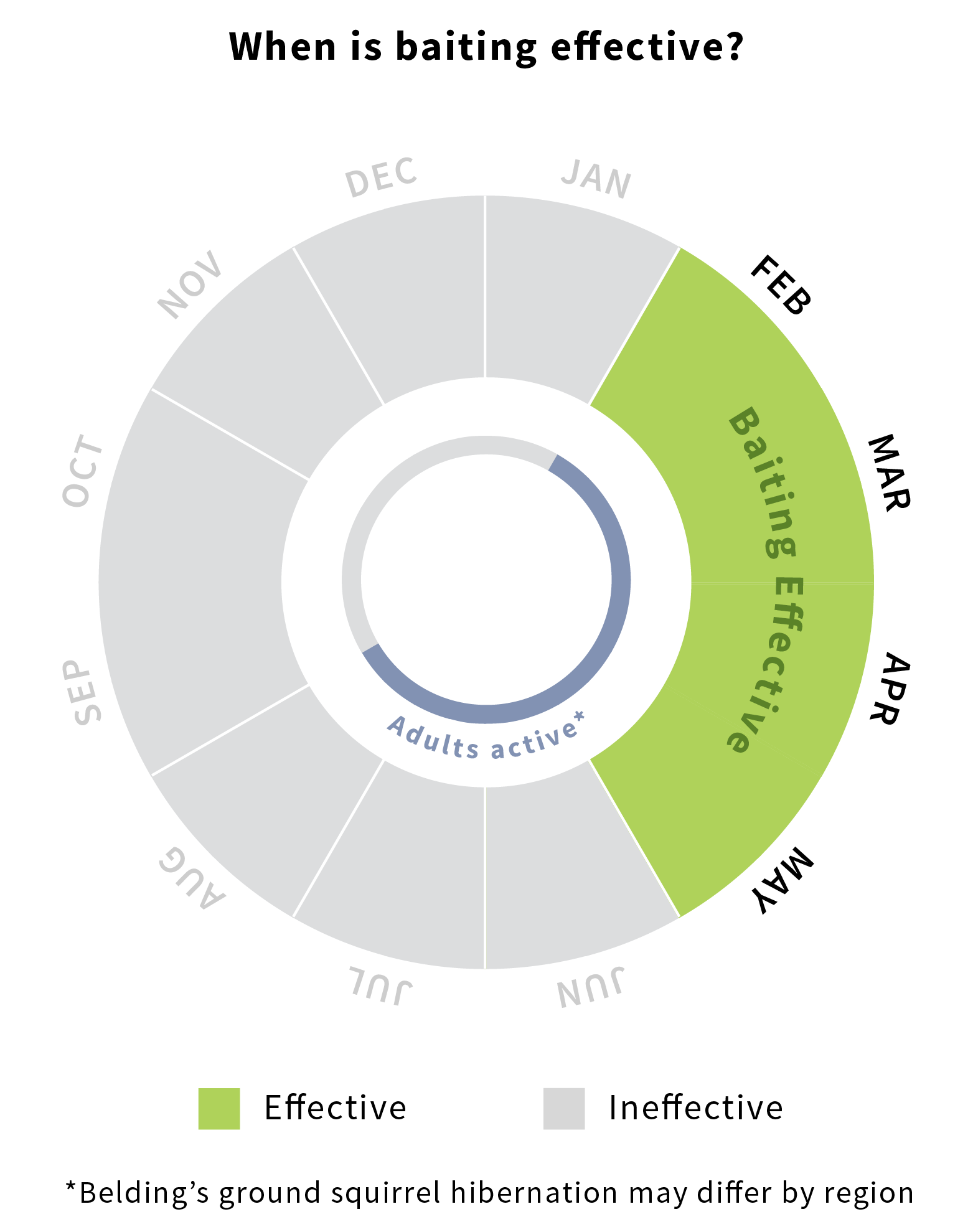Toxic Baits | Belding's ground squirrel
Return to Belding's ground squirrel menu
|
When applied to grain pellets as a carrier, neither first-generation anticoagulant rodenticides nor zinc phosphide have proven consistently successful at managing Belding’s ground squirrel populations. Belding’s ground squirrels rely heavily on green vegetation for their diet and less so on grains compared to other species of ground squirrels. Belding’s ground squirrel's diet also does not change dramatically from green forage to seeds, as it does for the California ground squirrel. For these reasons, toxicants on grain or pelletized carriers have not been very successful. While some growers have had some success using grain baits in the past, results vary.
Special Local Need Label As of 2015, a Special Local Need Label to utilize zinc phosphide-treated cabbage has been approved for Belding’s ground squirrel control in Siskiyou, Modoc, and Lassen Counties. Some success has been reported, but replicated trials are still needed to determine the actual efficacy and safety of this bait application approach. Preliminary results indicate that efficacy is about 69% and that prebaiting often increases efficacy. Always read and follow label instructions. View the label and additional details about this bait option at the CDPR website. In this baiting method, strips of cabbage are coated with zinc phosphide and then placed around active Belding’s ground squirrel burrows. This bait can be applied February through May while Belding’s ground squirrels are active. However, applications shall cease when regrowth of crop, including alfalfa, grassy alfalfa, pasture, rangeland, and non-crop areas reach 4 inches in height. Do not apply this bait if:
|




